Hyacinth Macaw
The Pantanal is a paradise for bird watchers and photographers. WIth over 600 species to see, you can be assured of variety. The dry season gatherings of wading birds as they feast on fish and crustaceans trapped in the shrinking water holes is an annual spectacular to see.
Modern South America lacks mega-fauna on the scale of Africa - but it makes up for this in diversity. You'll find some of the most beautiful and renowned species, such as the Hyacinth Macaw and Toco Toucan. This diversity occurs due to the Pantanal being located at the confluence of several other ecologically-important regions (such as the Amazon forest, Brazilian tableland plateau, the cerrado, and Paraguayan/Bolivian Chaco).
The diversity is also due to the wide range of environments and landscapes occurring within the Pantanal itself. Rather than being a ubiquitous wetland, it also contains large rivers, grasslands, dry forest, and high stony hills and outcrops. Although there is some competition between species, many also survive in parallel by exploiting different foods and different niches.


HYACINTH MACAW (Anodorhynchus hyacinthinus)
Sighting a Hyacinth Macaw (locally unknown as Arara Azul) is often one of the most treasured experiences for any visitor to the Pantanal. It's the largest parrot in the world, by length (reaching up to 100cm), and has a stunning cobalt blue coloration. Although critically endangered throughout most of their former range, hyacinth macaws are relatively plentiful within the Pantanal. This is thanks to a determined conservation effort by programmes such as Projeto Arara Azul. One of the most critical factors for survival is the availability of suitable nesting trees. Around 90% of nests are constructed in a single species of tree (the manduvi tree), with hollows of sufficient size only being found in trees 60 years of age or older. This means that competition is fierce, and the loss of a few trees can have a devastating long-term effect. One of the greatest successes of conservation efforts has been the creation of many artificial nesting sites. At their low point, the population was down to around 1,500 individuals. However, thanks to intensive conservation efforts and volunteer work to ensure the survival of chicks, the population has risen to an estimated 5,000 over past two decades. Like most macaws, Hyacinths form strong pair-bonds, with couples remaining together over the entirety of their lifetime. Hyacinth Macaws have actually benefited from cattle-ranching in the Pantanal since much of Hyacinth Macaw's diet consists of acuri palm nuts - which have had their husks removed by passing through cattle's digestive tracts. As a result, Hyacinth Macaws are more numerous alongside cattle. It's possible that cattle have replaced a similar natural relationship that Hyacinth Macaw's once had with now-extinct megafauna such as the toxodon and giant ground sloth.
Aside from the loss of habitat and breeding nests, the biggest threat to the Hyacinth Macaw has been the pet trade. Individuals sell in the US for $10-15,000. The last (legal) reported sale in Australia netted more $30,000. The Hyacinth Macaw's stunning blue looks also makes it popular with owners in Europe, Asia and the Middle East. Although the export/import of wild birds is prohibited, unscrupulous buyers can be tempted by cheaper prices for smuggled birds. Given the Pantanal's close proximity to Bolivia and Paraguay, the usual route is to take the birds out via either of these two countries (particularly Paraguay). Smugglers resort to packing large numbers of chicks into small spaces and vehicle tyres without food or water. The survival rate may be 1 in 20, at which point the smugglers still make a profit. Even in the best of conditions, hand-raised chicks need special care to ensure their survival. The result is a large number of birds being harvested (usually by chopping down the nest trees) and the destruction of the species in the wild. This same fate recently befell another blue macaw species in north-eastern Brazil, the Spix's Macaw. In the 1980s, it's estimated that around 10,000 Hyacinths were taken from the wild. Fortunately, greater recognition within the Pantanal, monitoring, and involvement of local ranch owners have resulting in this smuggling being reduced - although not eliminated entirely.
The Pantanal is home to seven macaw species in total. These are mostly the smaller green "mini-macaw" species (Red Bellied Macaw, Golden-Collared Macaw, Blue-Winged Macaw, and Red-Shouldered Macaw), but also include the Blue-and-Yellow Macaw, and the Red-and-Green Macaw.



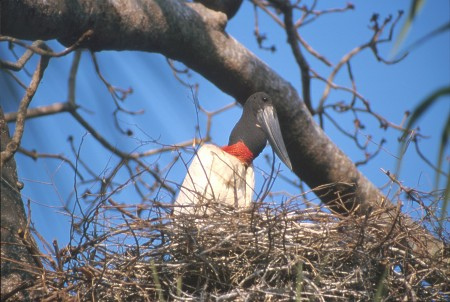
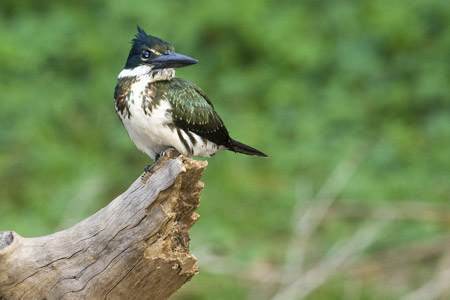
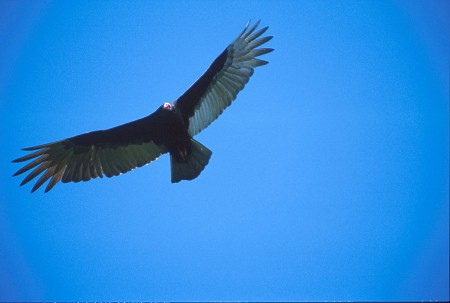


Banner image: Blue Hyacinth Macaw (Shutterstock/M. Lorenz)
Footer images: Tuiuiú, Turkey Vulture(Andrew Mercer); Amazon Kingfisher (Shutterstock/Ecoventurestravel)
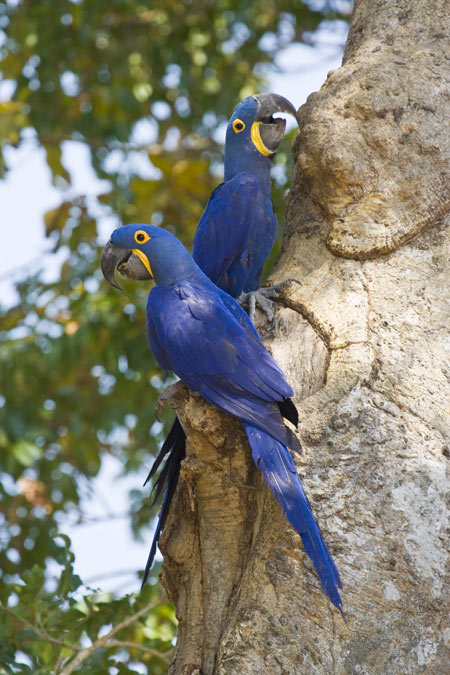
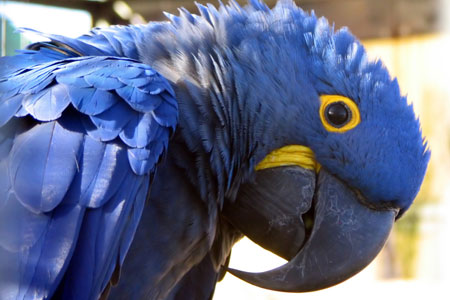
Pantanal Escapes